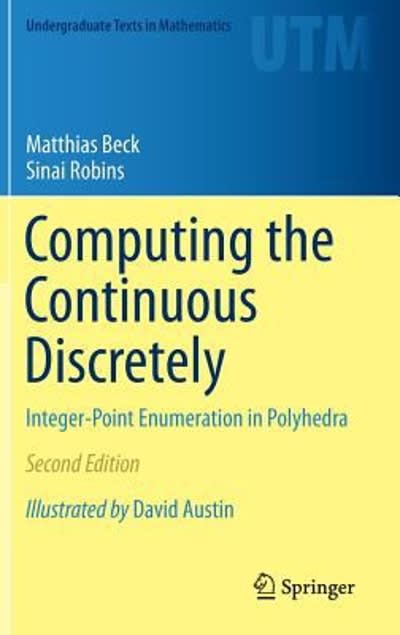




2-4
Use the data, integral calculus, and numerical methods of integration to answer the following questions. Exercises 1. Set up an integral that represents the total number of particles per cubic centimeter found in the atmosphere above Pasadena. Estimate the value of this integral, and explain how you made the estimation. Is your estimate an over- or underestimate? 2. How many particles per cubic centimeter lie between .05 um and .55 um? 3. Under the proposed 2.5 am standard, all particulate matter of diameter 2.5 pum and above should be filtered out of the atmosphere. What percent of the total number of particulates would have been removed had this standard been followed in Pasadena? What standard would be required if we wanted to reduce the number of particulates by 10%?Computing Mass When scientist make recommendations concerning environmental standards, the most important single measure is the mass of the pollutant that is present. If we have data on the number of particles per cubic centimeter for some particle of diameter p, then since we can compute the volume of eac particle, knowing the mass density of the particle would enable us to compute the total mass of particulates. The actual density of particulate matter varies slightly with the different types of particles, but a typical density is about 1.5 g/cm". Use this value for density in answering the questions below. Exercises 1. Write down an experssion for the mass of a single particle of diameter p, measured in um. 2. Set up an integral that represents the total mass of particles per cubic centimeter found in the atmosphere above Pasadena. Estimate the value of this integral, and explain how you made the estimation. Is your estimate an over- or underestimate? 3. Write down an integral that represents the additional mass of particulate matter (per cm") that would be removed from the air over Pasadena if the standard were changed from 10 um to 2.5 um. What standard would be required if we wanted to reduce the mass of the particulates by 10%?The Size Distribution Function Because the number of different diameters of particles in a polluted atmosphere can be so large, scientists assume that the variation in diameters of particles is continuous. When scientists make measurements of aerosols, they can measure, for a typical cubic centimeter of air, the number of particles that fall within a small range of diameters. This method of measurement is more efficient and practicable than trying to measure the quantity of every size particle present. Let p represent the diameter of particles in an atmosphere. Using the previously stated variation in sizes, we note that typically 10 A
















